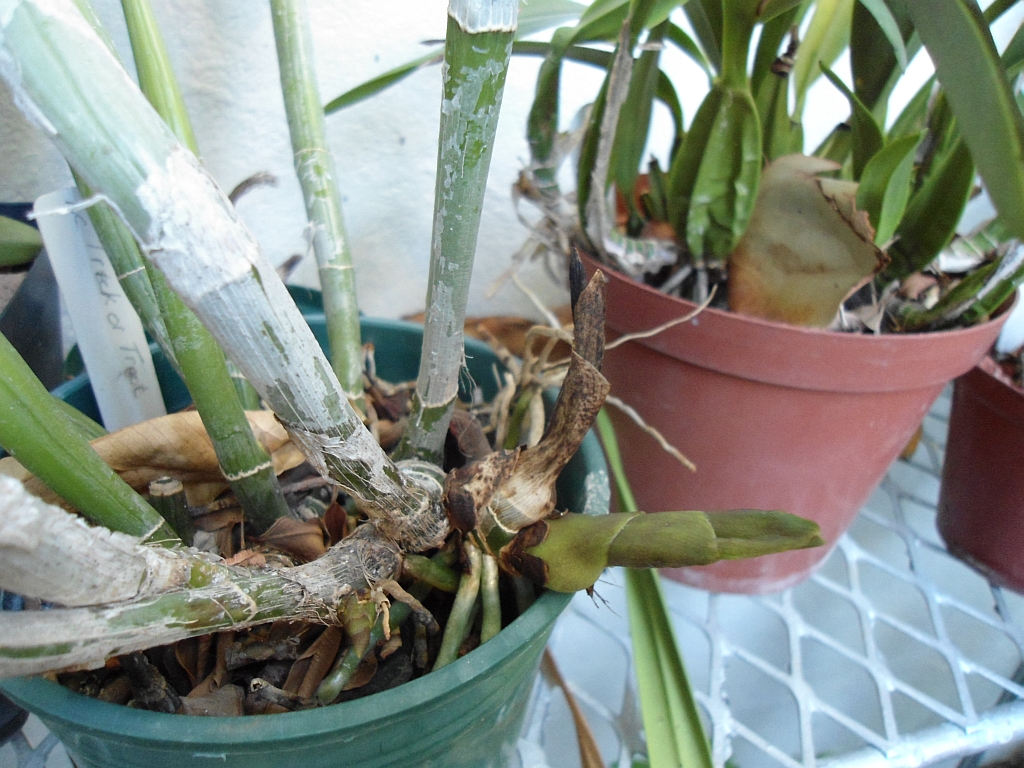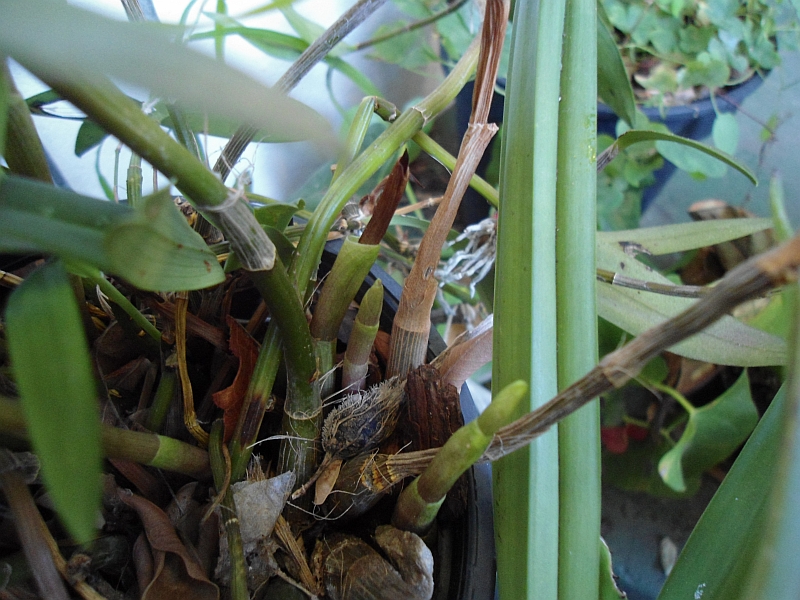H
Hera
Guest
Have you cleared out the growing space and sprayed down the benches , walls and floors with a bacteriacide? Spores permeate the growing area and it might be time for a good cleaning. Forgive me if I am repeating someone.

Ho Keith,
Over the next week I will start repotting and quarantining symptomatic plants (not that I think there are any unaffected plants).
Hi Rick,
I have started adding Ca/Mg to my water.


Some photos of the problem:


In the picks you can see a Catt Trick or Treat and Dendrobium kingianum. The new growths had withered back (rotted and then stopped). There is no damage to the pseudobulbs (they are even sending out roots). Since watering with the bleach some new growths have come along better but I am not sure they are viable. The Catt growth has stalled, not growing any more for about a month now. (The L. anceps in the background, I think, is pretty much wasted, having run out of nodes to sprout new growth.) Root tips are green and growing so I don't think this a bleach problem.
Hi Rick,
No... Our tap water is generally soft (about 1-2 GH). I'm supplementing now with Ca/Mg up to the levels in the MSU fertilizers.
In the past, soft water hasn't been a problem.
Hi Rick,
If I recall correctly, I it is a solution of calcium chloride and magnesium sulfate. For some odd reason I didn't list the contents (and concentrations) on the bottle, only the dose (2 mL to 1 L). When it is done I will need to rethink the mix.
I have lots of new growth coming and I am hopeful that some of these will make it.
I have an expert visiting me this coming Friday to have a look and give some advice.
Thanks for your advice.
Enter your email address to join: